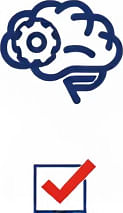Boosting Productivity Through Seasonal Changes with ADHD
 by Thaddeus Blanda
by Thaddeus Blanda
Explore how seasonal shifts can influence productivity for those with ADHD and discover practical strategies to maintain focus and energy. Learn simple techniques to adapt routines and build momentum in daily life, fostering a sense of control and achievement.

Many people with ADHD notice that their energy levels and focus fluctuate with the seasons. For instance, shorter days in winter might bring feelings of fatigue, while warmer months could spark bursts of activity. This natural rhythm can make maintaining productivity challenging, but with the right approaches, it's possible to turn these patterns into opportunities for growth.
One effective way to handle this is by adjusting daily routines to align with seasonal light and weather. In summer, when days are longer, individuals might find it easier to tackle tasks early. Using a timer can help structure these periods. For example, setting a timer for focused work sessions allows for short, manageable bursts of effort that prevent overwhelm.
As autumn arrives, with its cooler temperatures, creating a cozy workspace becomes key. Organizing your environment to minimize distractions is essential. A simple list of daily goals can guide you through the day. Consider incorporating outdoor walks during this time, as fresh air often helps refresh the mind and improve concentration for those with ADHD.
Winter poses its own set of hurdles, like reduced motivation due to less sunlight. To counter this, breaking tasks into smaller steps makes them less intimidating. For example, if a project feels too large, divide it into bite-sized actions that can be completed in one sitting. This method ensures steady progress without the pressure of perfection.
In spring, the renewal of nature can inspire renewed vigor. Using visual cues, such as a planner with seasonal themes, might motivate you to stay on track. Experimenting with different tools, like apps that remind you of goals, can provide the gentle nudge needed to keep moving forward.
It's helpful to remember that everyone with ADHD experiences these shifts differently, and finding what works best is a personal process. Building in flexibility allows for adjustments as needed, fostering a supportive routine that adapts to life's ebbs and flows.
Here are some practical techniques to try:
- Start with short, focused sessions using a timer to build momentum.
- Incorporate nature-based activities, like walks, to reset your focus.
- Keep a simple goal list to track achievements and celebrate small wins.
- Adjust your workspace seasonally to maintain comfort and reduce distractions.
By applying these strategies, you can navigate the ups and downs of seasonal changes while building resilience. The key is to approach each day with kindness and patience, recognizing that progress is about consistent effort rather than flawless execution.
